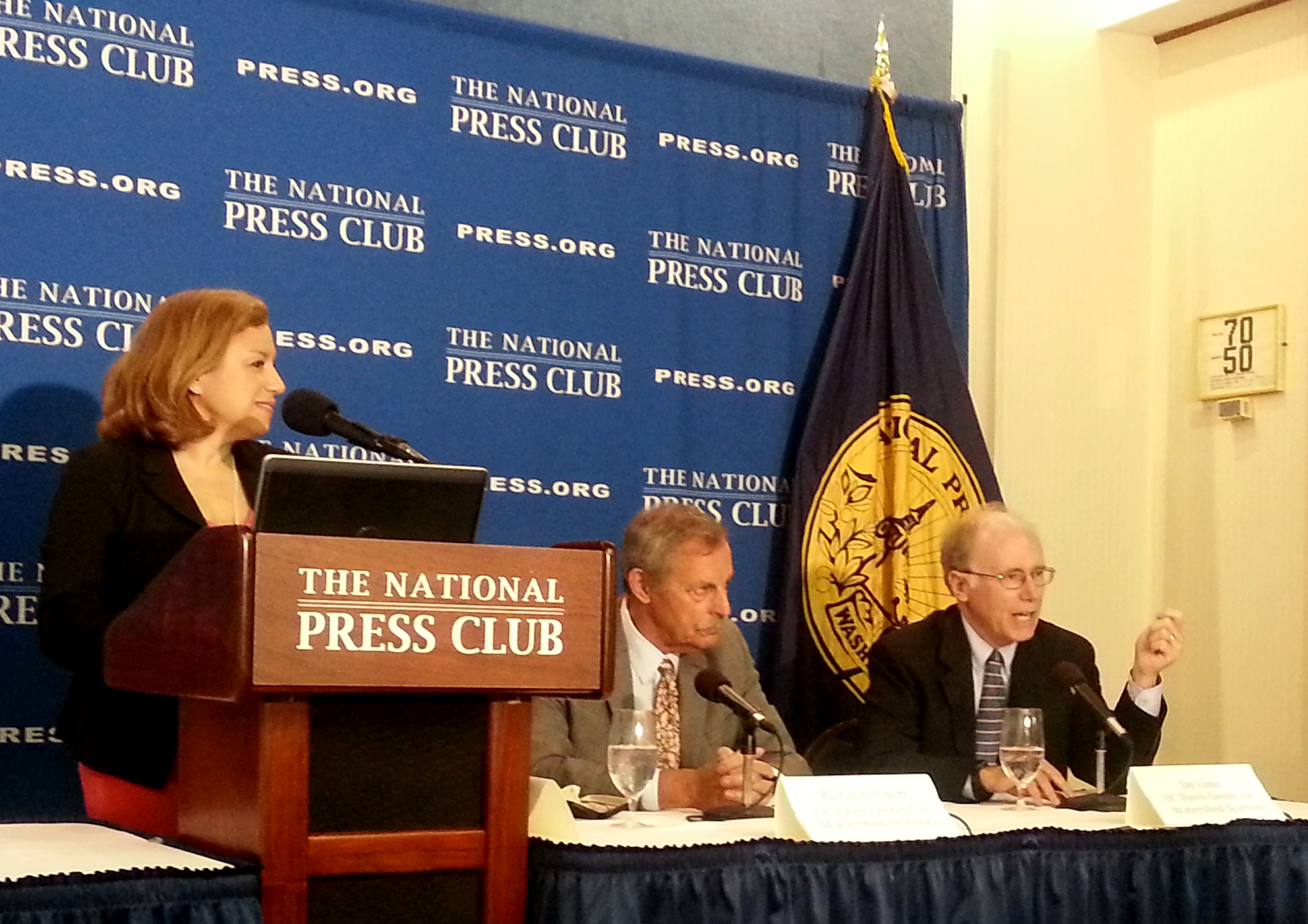WASHINGTON–California has been pumping groundwater to cope with its catastrophic drought, but pockets of pain remain in some agricultural communities, and treating groundwater like an unlimited resource could have disastrous results in the future as the supply dries out, researchers said Tuesday.
Reliable groundwater access separates “winner” and “loser” communities in the state this year, said Richard Howitt, professor emeritus of agriculture and resource economics, University of California, Davis Center for Watershed Sciences.
According to a study released Tuesday by the UC Davis center, the drought will cost the state $2.2 billion in revenue and 17,100 seasonal and part-time jobs. The state is replacing 75 percent of its lost surface water, which totals 6.6 million acre-feet, with pumped groundwater.
As California guzzles groundwater to keep drought effects at bay, the experts say it needs to start paying closer attention to how it budgets this limited resource.
Increased interaction with groundwater models is needed to better monitor availability and use, but Howitt said California does not even measure its groundwater. He drew a comparison to personal finance:
“We’re walking around signing checks without even balancing the checkbook because we still think we are in a groundwater-rich era. Every other Western state has started to measure its groundwater,” Howitt said.
Water scarcity has especially hurt the Central Valley, with water shortages costing the region $800 million in lost farm revenue and $447 million in additional groundwater pumping costs. Coastal and Southern farm regions are less affected, as the former enjoys better groundwater access and the latter relies primarily on Colorado River water supplies, which the drought has not drained so severely.
Just like regions have seen varied degrees of impact, some industries have suffered worse than others. The livestock industry was hit first, as hay and feed prices ballooned and some ranchers sold their herds, said California Food and Agriculture Secretary Karen Ross. She noted the California ranchers at least were able to sell at good prices – to Midwestern ranchers trying to replenish their herds that were hit by a drought two years ago. Howitt said small citrus, vegetable and food growers are among the losers this year, too.
Policy initiatives should focus on groundwater reliability, ensuring assistance to rural communities and facilitating voluntary water trades. A “portfolio” approach to alleviate deprived regions’ pain should include improved water capture, conservation, recycling and storage, said Ross.
The report also indicates El Niño, which some hoped could bring rain, is not a viable option.
“Don’t rely on El Niño for anything,” said Jay Lund, director of the UC Davis Center for Watershed Sciences. He later noted that “water is a scarce commodity in California and we have to act that way all the time.”
Droughts on the West Coast are similar to hurricanes on the East Coast, Lund said. Neither is preventable, but both can be mitigated with preparation. In addition to better groundwater handling, Lund suggested retrospective assessment of the current drought and the use of remote sensing estimates could better prepare the state for future droughts.


